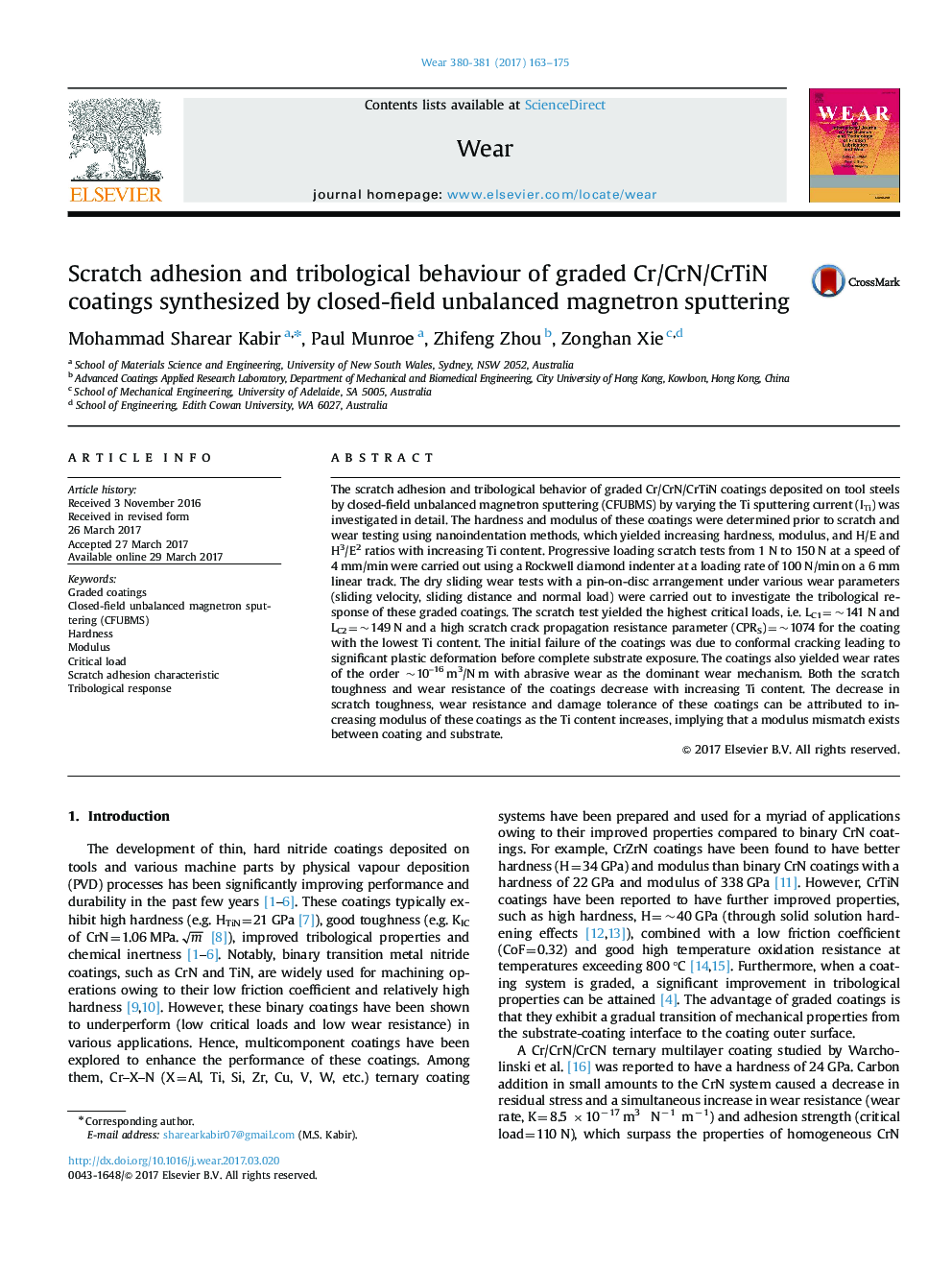| Article ID | Journal | Published Year | Pages | File Type |
|---|---|---|---|---|
| 4986502 | Wear | 2017 | 13 Pages |
Abstract
The scratch adhesion and tribological behavior of graded Cr/CrN/CrTiN coatings deposited on tool steels by closed-field unbalanced magnetron sputtering (CFUBMS) by varying the Ti sputtering current (ITi) was investigated in detail. The hardness and modulus of these coatings were determined prior to scratch and wear testing using nanoindentation methods, which yielded increasing hardness, modulus, and H/E and H3/E2 ratios with increasing Ti content. Progressive loading scratch tests from 1Â N to 150Â N at a speed of 4Â mm/min were carried out using a Rockwell diamond indenter at a loading rate of 100Â N/min on a 6Â mm linear track. The dry sliding wear tests with a pin-on-disc arrangement under various wear parameters (sliding velocity, sliding distance and normal load) were carried out to investigate the tribological response of these graded coatings. The scratch test yielded the highest critical loads, i.e. LC1=~141Â N and LC2=~149Â N and a high scratch crack propagation resistance parameter (CPRS)=~1074 for the coating with the lowest Ti content. The initial failure of the coatings was due to conformal cracking leading to significant plastic deformation before complete substrate exposure. The coatings also yielded wear rates of the order ~10-16Â m3/NÂ m with abrasive wear as the dominant wear mechanism. Both the scratch toughness and wear resistance of the coatings decrease with increasing Ti content. The decrease in scratch toughness, wear resistance and damage tolerance of these coatings can be attributed to increasing modulus of these coatings as the Ti content increases, implying that a modulus mismatch exists between coating and substrate.
Related Topics
Physical Sciences and Engineering
Chemical Engineering
Colloid and Surface Chemistry
Authors
Mohammad Sharear Kabir, Paul Munroe, Zhifeng Zhou, Zonghan Xie,
